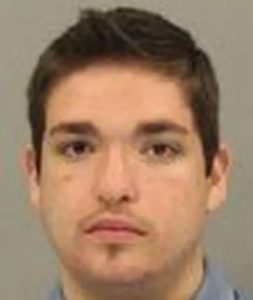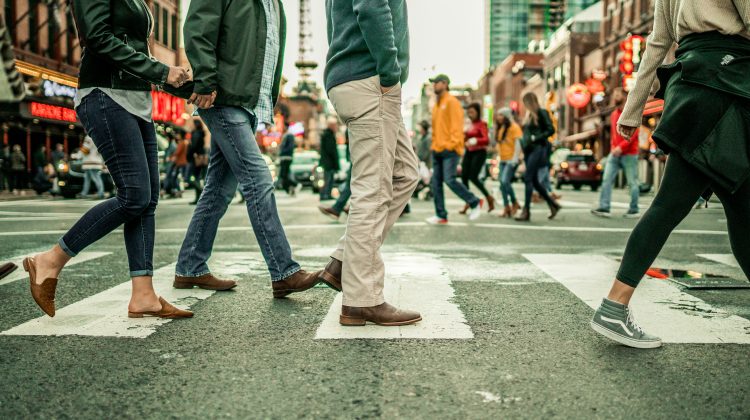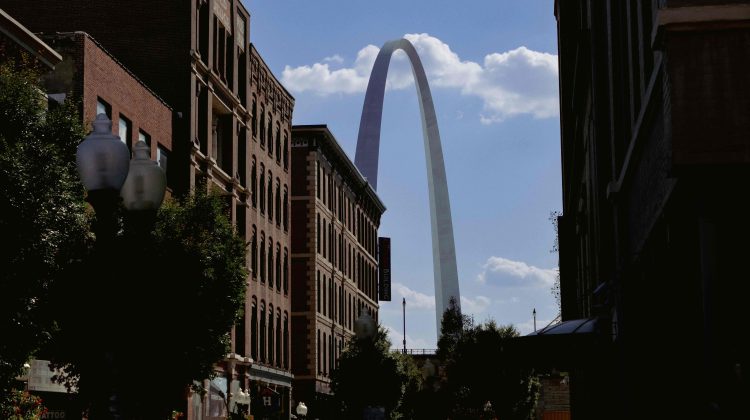In recent years, the “troubled teen industry,” including of reform schools, residential treatment facilities, and wilderness therapy camps, has faced increased scrutiny as former students recount the mistreatment they endured. (One prominent advocate for this cause is Paris Hilton.) Despite the industry’s gradual movement towards reform, wilderness therapy remains largely unnoticed.
This is because wilderness therapy is marketed as a shorter-term solution (typically lasting about 90 days) and lacks federal oversight, experts explain. In promotional materials and online, these programs appear idyllic, offering children grappling with various behavioral issues a chance to “connect with nature” and “find hope and healing.”
The recent death of a 12-year-old boy from New York at Trails Carolina has sparked renewed outrage over the multi-billion dollar wilderness camp industry. Here are some more of the grim stories:
1. Lane Lesko (2016)

Lane Lesko, a 19-year-old from Ann Arbor, Michigan, escaped from a youth camp called Summit Achievement and approached police officers on June 21, 2016, pleading, “Just shoot me, just kill me!” Tragically, this encounter resulted in his death. Earlier, police had attempted to stop him after he stole a car, leading to a high-speed chase.
Lane was grappling with mental health issues, including bipolar disorder, and was on the autism spectrum. He also had a history of legal troubles, with convictions for offenses such as unlawfully driving away a vehicle and home invasion.
2. Alec Lansing (2014)

Alec, 17, ran away from Trails Carolina, only to succumb to hypothermia. His body was discovered in a stream after he climbed a tree, broke his hip, and was unable to escape the freezing water.
Succumbed to hypothermia after running away. His body was found in a stream after he climbed a tree, fell, and broke his hip, unable to escape the freezing water.
3. Daniel Huerta (2011)

Daniel Huerta died in a car crash while being driven by a staff member at AMIkids Big Cypress, a camp in Ochopee, Florida. It is unclear whether he drowned or succumbed to other injuries from the crash when the car hit a road sign and overturned in a canal. The driver, Johnson Atilard, also died at the scene, while six other passengers survived. The camp has since shut down.
4. Caleb Jensen (2007)

Caleb Jensen, 15, died after being sent to Alternative Youth Adventures, a court-ordered wilderness camp in Colorado as part of a state juvenile justice system intervention. His body was found wrapped in a sleeping bag soaked with his own feces and urine.
Caleb reportedly developed a severe staph infection at the camp, which was neglected by the staff, leading to his death. Autopsy reports and court documents revealed that the staff failed to respond adequately to his medical needs despite clear symptoms and complaints.
A Colorado grand jury indicted individuals at the camp for manslaughter and fatal child abuse, although not all charges were upheld in court. The teenager’s family filed a $45 million lawsuit against the camp and its staff, as well as Utah’s Child and Family Services and Juvenile Justice Services. Subsequently, Utah discontinued its contracts with wilderness camps.
5. Ian August (2002)

In the summer of 2002, 14-year-old Ian August died after being forced to hike in the midday heat at a wilderness therapy camp in Utah. Despite being overweight and in poor physical condition, Ian was made to continue hiking even after complaining of thirst and stopping multiple times. He eventually fell unconscious and, due to the remote location and incorrect information provided to rescuers, an ambulance arrived too late. Camp employees Leigh Hale and Mark Wardle were accused of ignoring Ian’s distress and faced court proceedings along with the camp for his death.
6. Katie Lank (2002)

Sixteen-year-old Katie Lank from Virginia lost her life on January 13, 2002, after suffering an injury while hiking with Redrock Ranch Academy of St. George. She fell approximately 70 feet into a crevasse and succumbed to her injuries three weeks later in a hospital.
No charges were pressed following the incident, but her parents pursued legal action against the program and two staff members, eventually reaching a confidential settlement. The program later ceased operations.
7. Charles Moody (2002)
Later that year, on October 14, 2002, 17-year-old Charles Moody died of traumatic asphyxia after being restrained face-down by counselors at the On Track therapeutic wilderness camp, owned by the Brown Schools. Chase was at the camp to address anger and behavioral issues.
The incident began when Chase broke a camp rule by talking in his tent after the lights were out, leading to a physical confrontation with the counselors. The restraint position they used prevented him from breathing properly, causing him to vomit and choke on his own vomit. He was held in this position for nearly 30 minutes before help was called, but by the time emergency services arrived, it was too late.
The Travis County Medical Examiner determined the cause of death to be traumatic asphyxiation. However, the Brown Schools disputed this finding, suggesting that Chase died from “excited delirium syndrome,” a controversial diagnosis often associated with deaths in custody that involves a rapid onset of extreme agitation and aggression leading to sudden cardiac arrest.
8. Anthony Haynes (2001)

In July 2001, 14-year-old Anthony Haynes died at Charles Long’s boot camp in Arizona after collapsing in the triple-digit desert heat. Sent to the camp for behavioral problems such as slashing his mother’s car tires and shoplifting, Haynes began behaving erratically, eating dirt, and hallucinating before collapsing.
After losing consciousness, he was taken to a hotel room by a counselor and other boys and placed in a shower, during which he inhaled water, worsening his severe dehydration. When the counselor informed Long of Haynes’ condition, Long instructed them to return the boy to the boot camp instead of seeking immediate medical help. Despite later attempts to resuscitate him, Haynes died at the camp.
The cause of death was determined to be complications from near drowning and dehydration. In 2005, Long was convicted of reckless manslaughter, and his camp was shut down.
9. William ‘Eddie’ Lee (2000)

On September 18, 2000, 15-year-old William Edward Lee died while being restrained by staff members at the Obsidian Trails wilderness camp in a remote area of south-central Oregon. The incident occurred after Lee, who had been taken to urinate, refused to return to the campsite.
When staff attempted to bring him back, Lee resisted, and the instructors forcibly restrained him until he stopped breathing. An autopsy revealed that Lee died from an injury to an artery on the left side of his neck near the base of his skull and also suffered fractures in two vertebrae in his neck. The camp staff members were later charged with criminally negligent homicide in connection with Lee’s death.
10. Aaron Bacon (1994)

Like many others, 16-year-old Aaron Bacon endured a harrowing ordeal while at North Star Expeditions, a wilderness therapy program in Utah. He died on March 31, 1994, from acute peritonitis caused by a perforated ulcer after several days of hiking through the rugged terrain of the Escalante River Canyon in southern Utah.
Aaron had documented his ongoing abdominal pain in his journal, but on the day of his death, he succumbed to his condition and was found unconscious and pulseless in the back of the camp’s pickup truck.
11. Michelle Sutton (1990)

Fifteen-year-old Michelle Sutton from California tragically passed away on May 9, 1990, due to altitude sickness, dehydration, and heat exhaustion while hiking with Summit Quest of St. George.
Although no charges were initially filed, her parents took legal action against the program, physicians, and a psychologist. In 1992, Summit Quest settled the case, using its remaining insurance policy funds totaling $345,000, while claims against the other parties were dismissed by a judge.
12. Kristen Chase (1990)

Kristen, 16, died of heat stroke during a hiking expedition with the Challenger Foundation on June 26, 1990. Despite showing symptoms of heat exhaustion and knee pain, the 16-year-old was forced to participate in strenuous hikes in extreme heat at a 6,000-foot elevation. The day before her death, she fell several times. On June 26, her condition worsened during a five-mile hike. Medical help arrived too late, and she was pronounced dead at 6:15 pm. The camp’s founder, Steve Cartisano, faced charges of negligent homicide and child abuse but was acquitted in 1992.
These heart-wrenching stories reveal the dark side of wilderness therapy camps, where the promise of rehabilitation has often resulted in tragedy. Still, these programs bring in more than 100 million dollars annually. Each tragic loss underscores the urgent need for stricter regulations and better oversight to protect vulnerable young lives. As more stories continue to come to light, the call for change grows louder, demanding that these facilities be held accountable to ensure the safety and well-being of the teens they are supposed to help. It’s a critical moment for reform and safeguarding the futures of these troubled youths.



No Comment